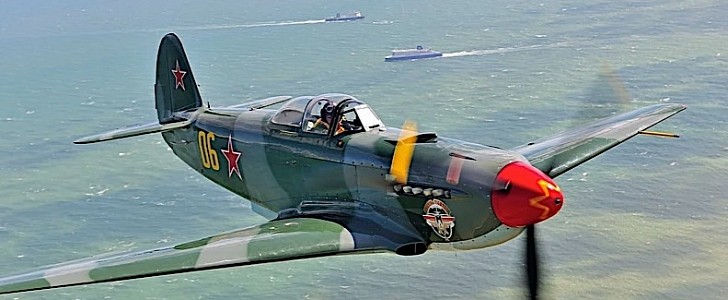The year 1942 represented the beginning of the end for the German Army in Europe. With supply lines extended beyond their limits, and a leadership that had to blindly follow Hitler’s at times erratic orders, the Nazi supremacy on the European battlefronts began to crumble.
Arguably the event that started it all was the Red Army’s Operation Uranus in 1942. Taking advantage of the poorly positioned enemy forces around Stalingrad, the Russians crushed through the attackers’ lines, surrounding the German Sixth and Fourth Panzer armies, and the Romanian Third and Fourth armies. From there, it was an almost uninterrupted, two-year long push to Berlin.
Helping the Soviets in their advance was a very long list of battle hardware. From tanks to field artillery and airplanes, there was virtually nothing the Russian didn’t throw into the fight.
One of the most reliable such pieces of hardware was the Yakovlev Yak-9. The single-engine, single-seat fighter was introduced in 1942, and was crucial to the success of the Reds in the battles of Smolensk (1943) and Kursk (1943 – known as the largest tank battle in history, it involved some 6,000 tanks on both sides, but also 4,000 aircraft).
Generally fitted with a 20 mm cannon and a 12.7 mm machine gun, the Yak-9 proved more than a match for the German Focke-Wulf Fw 190 and Messerschmitt Bf 109G – sadly, there are no records on the Russian fighter’s kill ratio during the fights.
There were close to 17,000 Yak-9s made and used both during the war and after, not only by the Russians, but also by the Chinese, North Koreans, and Yugoslavian air forces. A number of variants of the Yak were made, including the 9U, like the one in the gallery.
Officially, production of the Yak-9 stopped in 1948, and the last one from that batch was seen in the sky in 1955. But in the 1990s, the company that made them initially, Yakovlev, started building replicas using original equipment from the war, and Allison V-1710 engines for power.
The one you see here came to be in 1999, and even if it didn’t see any action during the war, it still looks as amazing as the original ones. Unlike them though, this one is a 2-seater with a full set of dual controls.
The airplane is currently selling on a specialized website, with pricing available upon request.
Helping the Soviets in their advance was a very long list of battle hardware. From tanks to field artillery and airplanes, there was virtually nothing the Russian didn’t throw into the fight.
One of the most reliable such pieces of hardware was the Yakovlev Yak-9. The single-engine, single-seat fighter was introduced in 1942, and was crucial to the success of the Reds in the battles of Smolensk (1943) and Kursk (1943 – known as the largest tank battle in history, it involved some 6,000 tanks on both sides, but also 4,000 aircraft).
Generally fitted with a 20 mm cannon and a 12.7 mm machine gun, the Yak-9 proved more than a match for the German Focke-Wulf Fw 190 and Messerschmitt Bf 109G – sadly, there are no records on the Russian fighter’s kill ratio during the fights.
There were close to 17,000 Yak-9s made and used both during the war and after, not only by the Russians, but also by the Chinese, North Koreans, and Yugoslavian air forces. A number of variants of the Yak were made, including the 9U, like the one in the gallery.
Officially, production of the Yak-9 stopped in 1948, and the last one from that batch was seen in the sky in 1955. But in the 1990s, the company that made them initially, Yakovlev, started building replicas using original equipment from the war, and Allison V-1710 engines for power.
The one you see here came to be in 1999, and even if it didn’t see any action during the war, it still looks as amazing as the original ones. Unlike them though, this one is a 2-seater with a full set of dual controls.
The airplane is currently selling on a specialized website, with pricing available upon request.











